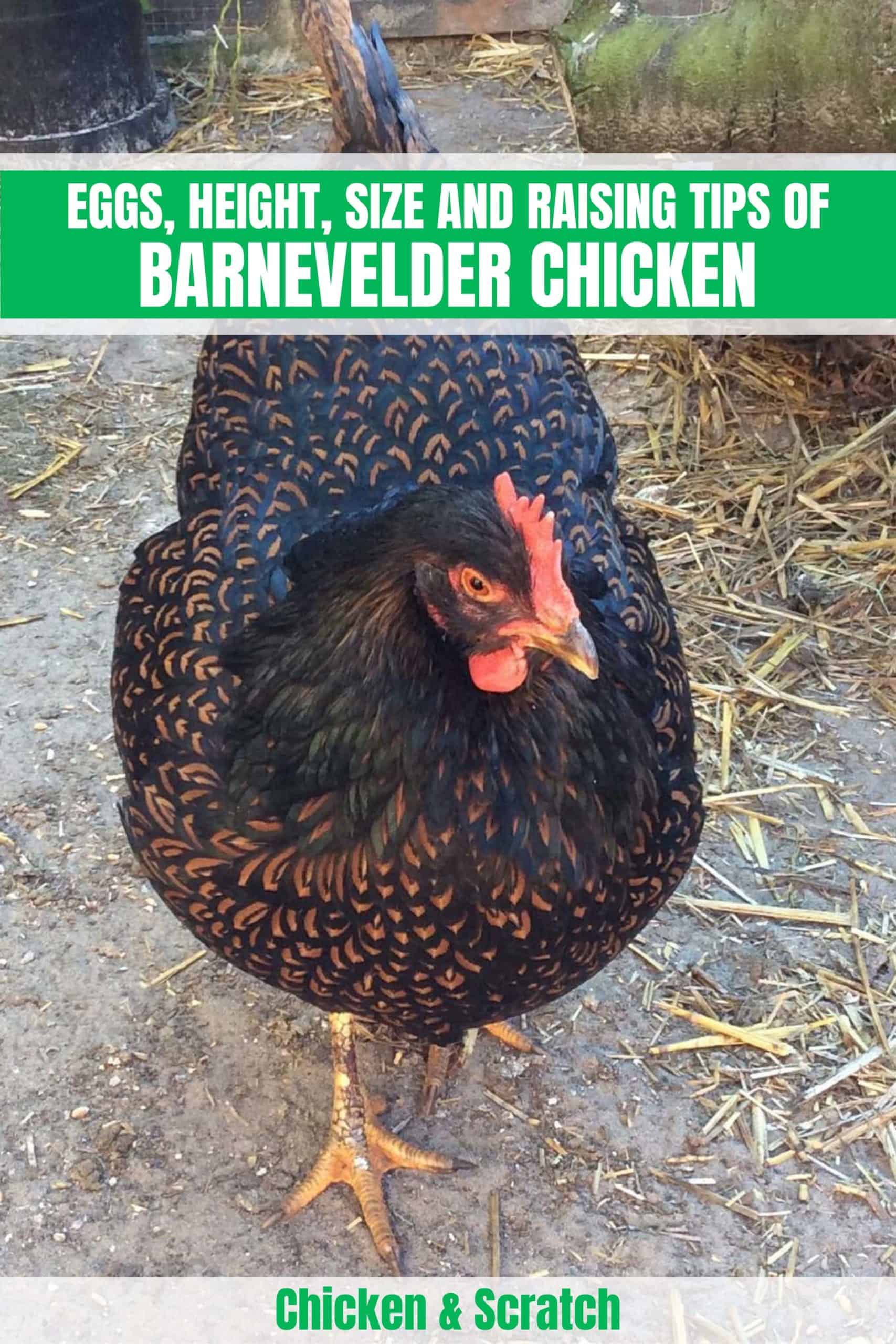Barnevelder chickens are large, utility chickens that are the result of cross-breeding many different chickens from Asia, Great Britain, Germany, and the United States.
These chickens are unique for their eye-catching double-laced iridescent black and green feathers and famous chocolatey dark brown eggs.
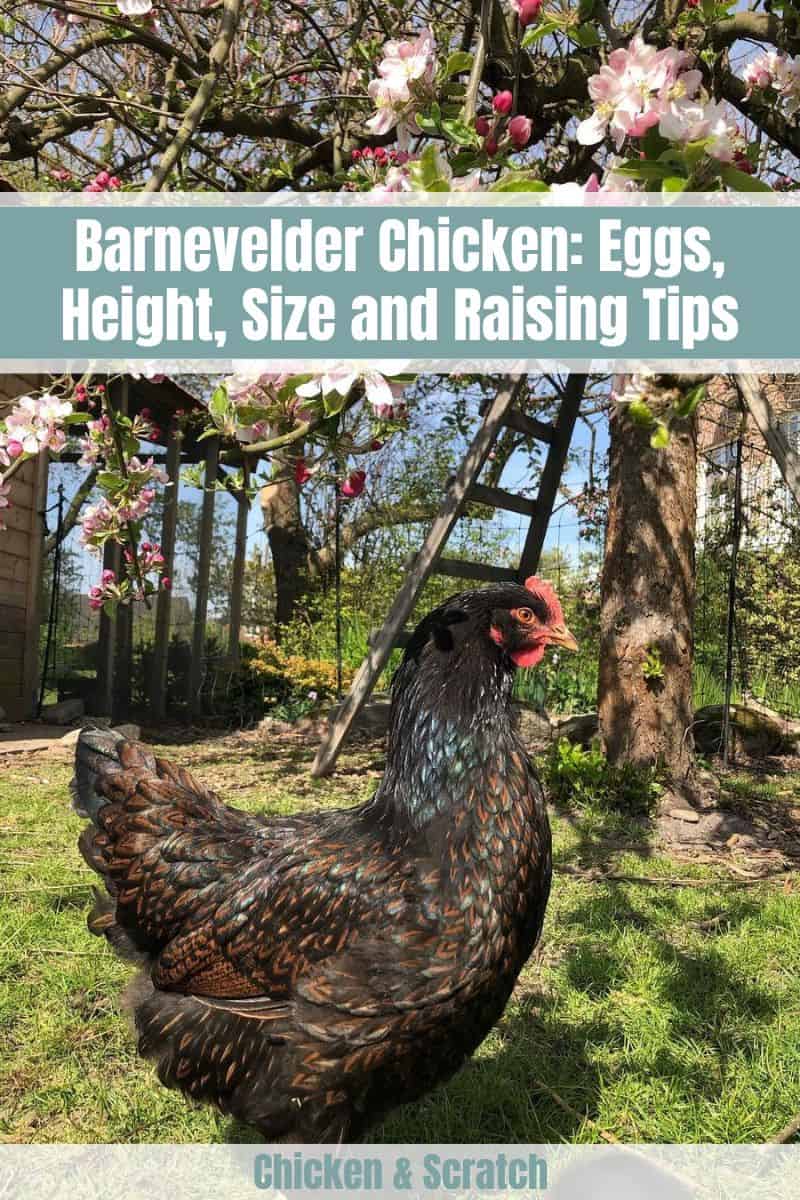
They have friendly, docile personalities that make them great on a farm or as a pet. They are dual-purpose chickens and are great at laying eggs with egg production year-round. While being rare, these chickens have excellent characteristics.
This article will cover
- History of Barnevelders
- Barnevelder Chicken Breed Standard
- Personality and Temperament
- Barnevelder Chicken Egg Laying
- Health Issues and Care
- 10 Tips for Raising Barnevelder Chickens
History of Barnevelders
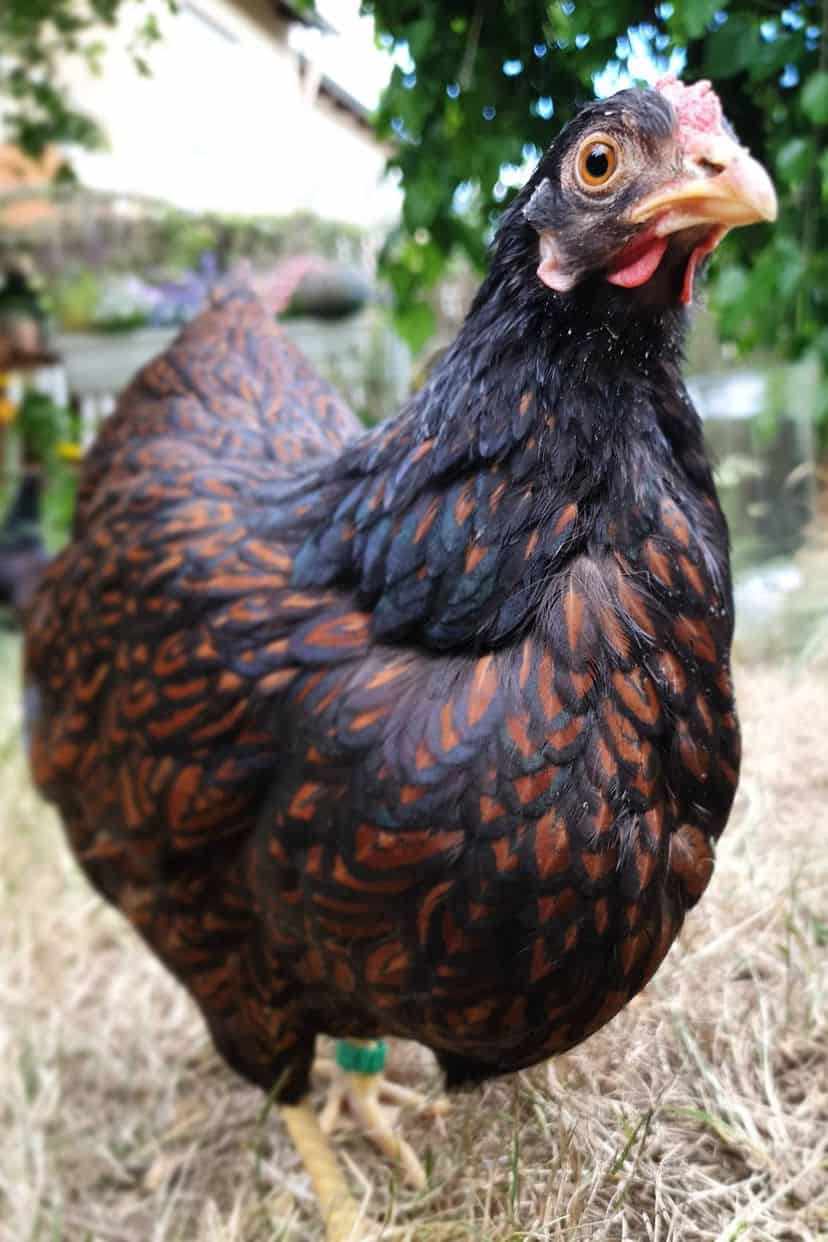
Chickens from Asia were first brought to Europe in the 1850’s. These birds were called “Shanghai” chickens, which are the predecessors of Cochin chickens.
About fifteen years later, these “Shanghai” chickens were cross-bred with local Dutch chickens in the Barneveld, Gelderland in the Netherlands.
The exact type of local Dutch chickens that were kept in the Barnevelder area is unknown. This led to larger eggs with brown shells and enabled hens to lay eggs in the winter.
The “Shanghai” chickens were cross-bred with other chickens from the United States and Germany to produce Brahma and Langshan chickens, respectively.
The chickens that were cross-bred from the “Shanghai” chickens and the local Dutch chickens were further cross-bred with Brahma chickens and Langshan chickens.
In the late 1890’s, these chickens were further bred with a chicken that was referred to as the “American utility birds” in the Netherlands, but it is unknown whether these birds actually originated in the United States.
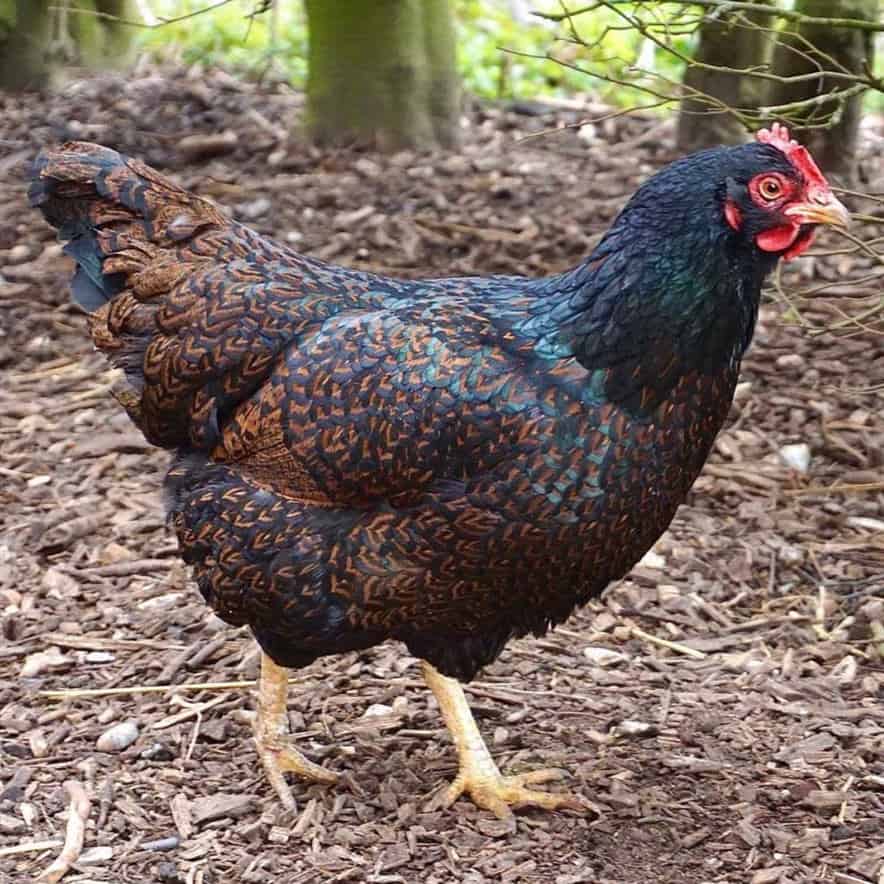
The “American utility birds” resembled Wyandotte chickens, which do have origins in the United States and are named after an indigenous group in North America. ”
American utility birds” laid red-brown eggs. In 1906, these chickens were further cross-bred with Buff Orpington chickens from Great Britain.
After all of this cross-breading, the Barnevelder chicken originated from the selection of chickens that laid dark brown eggs. The name Barnevelder chicken dates back to 1910.
The chicken gained popularity for its large, dark brown eggs, but initially was criticized for its lack of external uniformity. Their external appearance was standardized in 1921 with the creation of the Dutch Barnevelder Club.
The breed was recognized in 1923 when the double-laced standard was admitted to the Dutch Poultry Club. The double-laced standard was later admitted to the Poultry Club of Great Britain and the American Standard of Perfection.
After standardization, the Barnevelder chicken had problems with inbreeding and was again cross-bred with Marans chickens from France.
| Attribute | Barnevelder Chicken |
|---|---|
| Purpose | Dual Purpose |
| Egg Color | Dark Brown to Light Brown |
| Egg Size | Medium |
| Broody | Yes |
| Heat Tolerance | Yes |
| Cold Tolerance | Yes |
| Comb Type | Single, Vertical Comb |
| Egg Production | ~300 per year |
| Chicken Skin Color | Yellow |
| Life Span | 4 to 7 years |
| Adult Weight (Hen) | 6 to 7 lbs |
| Adult Weight (Rooster) | 8.5 lbs |
| Backyard Friendly | 4/5 |
Barnevelder Chicken Breed Standard
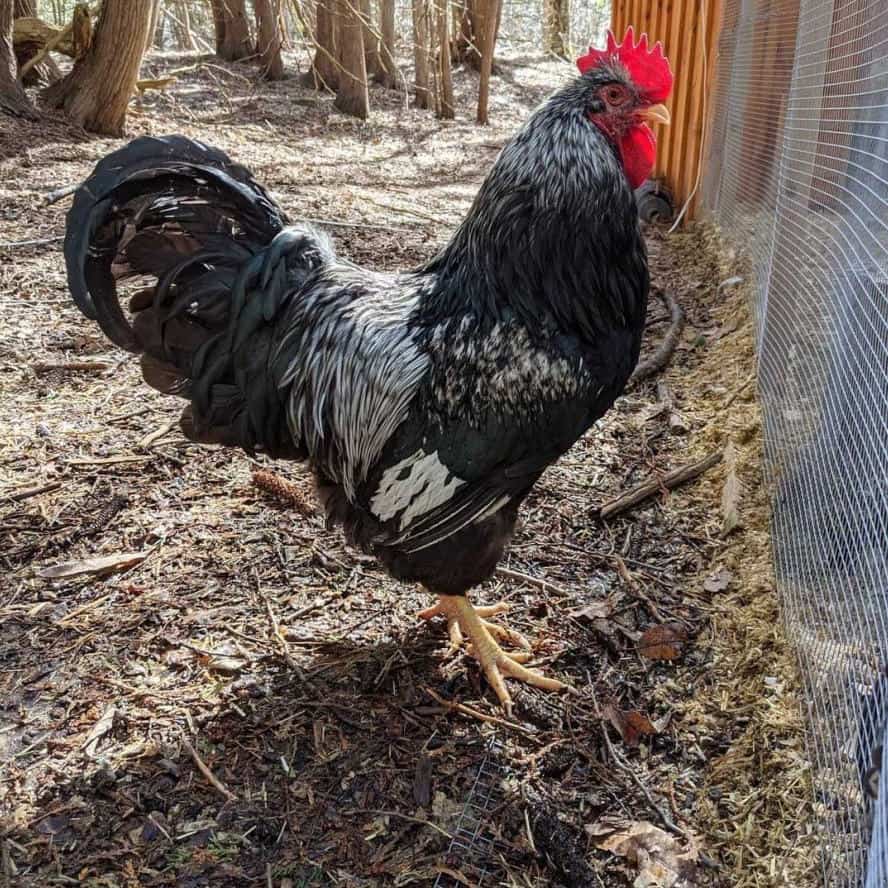
The standardized variety of the Barnevelder chicken is double-laced with a single, vertical comb and yellow skin. These chickens have large, soft feathers that stand upright. The feathers should be solid colored with no spots.
Darker under feathers are preferred and white patched under feathers is a major fault. The double-lace gives an arrowhead shape appearance. Both hens and roosters have short wings.
The hens express the double-laced appearance and have broadly laced, black feathers which can have a green hue. Roosters are black with red-brown markings on the back, shoulders, and wings. The feathers are iridescent with a green hue.
For a close-up view of this gorgeous plumage, check out this video The Dutch Barnevelder Club recognizes the double-laced, double-laced blue, black, brown, white, and silver double-laced bantam and full-size varieties.
The standard egg is not the dark brown color that was once desired. The selective breeding for dark brown eggs led to hens that did not have the double-laced standard. Selective breeding on the double-laced standard led to eggs that were less dark.
Thus, the standard egg is often a light brown or coffee-brown color. It should have a solid shell and weigh between 60 and 65 grams. There should not be any cracks, blemishes, or ridges. The surface of the egg should be smooth.
Personality and Temperament
Barnevelder chickens are laid-back and a little bit lazy. They are described as having a lively, quirky personality. They are not an active, energetic chicken breed, but do like to move around. They are easy to tame and do well in confinement but do prefer to forage and be free-range.
The roosters are calm and docile. Barnevelder chickens are friendly and do well with people, especially children. Despite being heavy, they do not mind being carried.
These chickens will sometimes follow people around and keep an eye out for children in a protective manner. They enjoy human interaction even though they tend to be a bit shy.
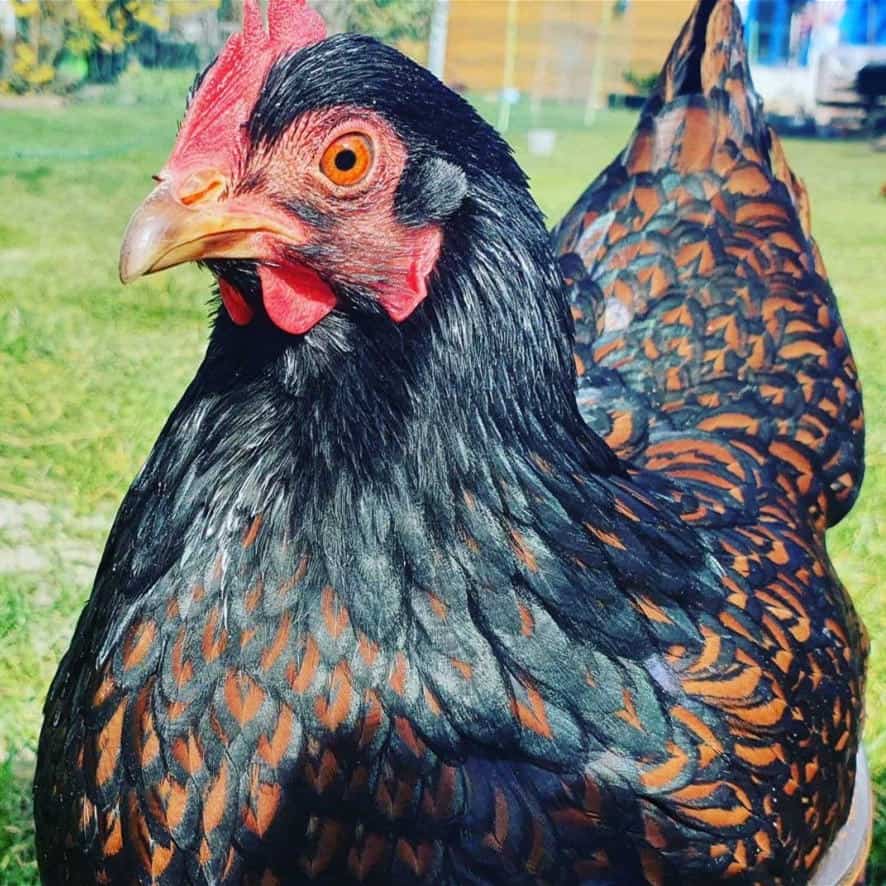
Both hens and roosters are good parents. Roosters are known to help raise and nurture new chicks. Hens can brood their own eggs and provide excellent care to their chicks. Barnevelder chickens do well socializing with other chicken breeds and domestic animals. They are known to be peacekeepers of a coop.
They do like to be higher on the social order, though, but this will be less of a problem if the chickens are socialized early. They can be a little vocal when in a flock but are generally quiet.
Barnevelder Chicken Egg Laying
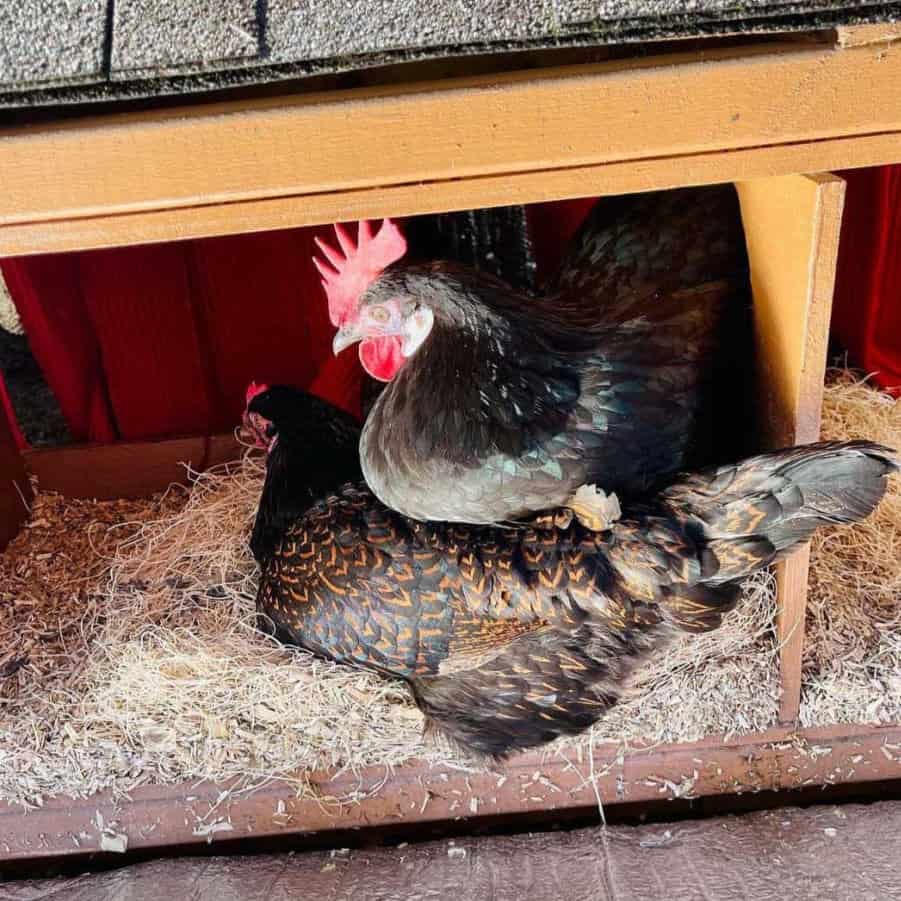
Barnevelder hens usually produce three to four eggs a week. Eggs may not be very dark, and the color does diminish as the laying season progresses. Eggs can vary in color, including speckled golden brown, dark brown, brown, light brown, and cream.
Because of selective breeding problems, eggs are typically lighter than they were when the breed was initiated. This means the eggs are not the chocolatey, dark brown that made the breed famous. The standard egg has a solid shell of either golden brown or coffee brown.
Hens are able to lay in the winter even when the weather is cold and damp. Egg production is slower in the winter, but many chickens cannot produce eggs in the winter at all.
With this, they are able to lay about 300 eggs a year. Egg sizes are about 2.1 to 2.3 ounces but can weigh up to three ounces. They start laying eggs at about 28 weeks old.
Health Issues and Care

Barnevelder chickens are prone to Marek’s disease and require vaccinations. Hatcheries offer vaccinations for chicks at very inexpensive prices. However, these chickens are generally healthy, hardy, and robust.
It is important to de-worm Barnevelder chickens, especially since they are social birds. De-worming regularly will help ensure that these chickens are healthy. For grooming, their plumage needs regular dust baths. This helps remove chicken mites and lice.
Barnevelder chickens can be fed standard laying food of chicken pellets, grains, chicken mash, and grain pellets. They also benefit from extra calcium and protein. These chickens love treats, but treats need to be rationed because they are prone to gaining weight.
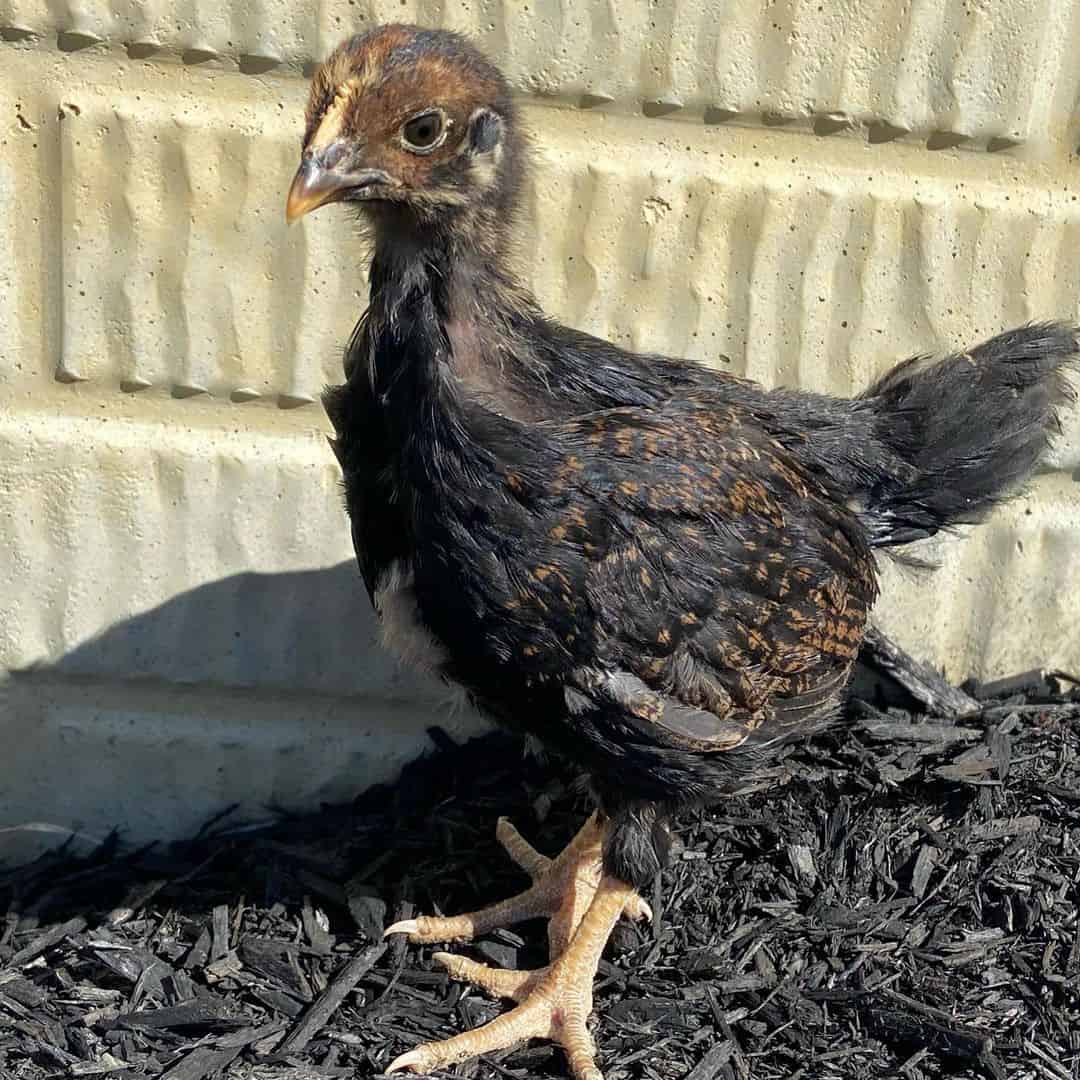
Avoid treats of pasta and bread and stick to healthier options. Limited treats and ensuring they get exercise will help these chickens maintain a healthy weight.
Barnevelder chickens can be in coops or free-range. If they are kept in coops, they need at least four to five feet per chicken with at least ten feet to run.
These are larger chickens with roosters averaging 8.5 pounds and hens between 6 and 7 pounds. This means that they require more room than many other chickens. Their average life span is four to seven years.
10 Tips for Raising Barnevelder Chickens
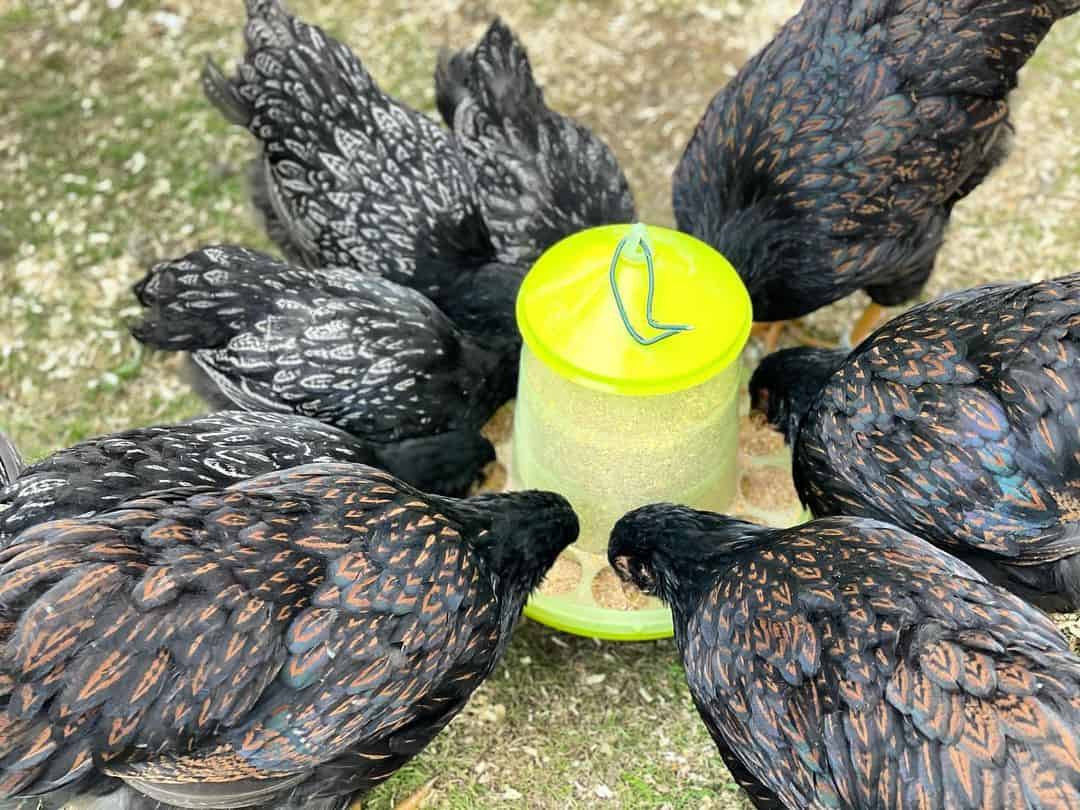
- Given their docile nature, Barnevelder chickens can appear a little lazy. It is recommended to have mandatory foraging times.
- Hens will produce better eggs and roosters will provide better meat if they exercise.
- Although Barnevelder chickens can tolerate cold weather, they do better in well-insulated chicken coops
- An easy way for Barnevelder chickens to get some exercise is to let them follow children around the farm
- A fenced space is good for confining Barnevelder chickens to keep predators away. Because they are poor flyers, they don’t need a cover.
- Barnevelder chickens have alpha tendencies and like to be high on the social order. Due to this, it is important to socialize a new chicken slowly.
- Barnevelder chickens are rare. Be sure to check the credentials of breeders and the bloodline of the chicken to be sure that you are buying a reputable chicken.
- Freeze table scraps in the summer to feed Barnevelder chickens because the ice will help cool them down
- Limit pasta and bread treats because these chickens are prone to gain weight
- Raise the coop above the ground to keep it dry for laying eggs during the winter
Summary
Barnevelder chickens originate from the cross-breeding of many different chickens and gained popularity from their dark, chocolate-colored eggs. They have a stunning appearance with double-laced plumage with large, soft, black feathers.
These chickens are rare in the United States, but make great additions to coops given their tolerance for confinement and free-range, friendliness with humans and other animals, ability to lay eggs during the winter, hardiness, and many other excellent characteristics.
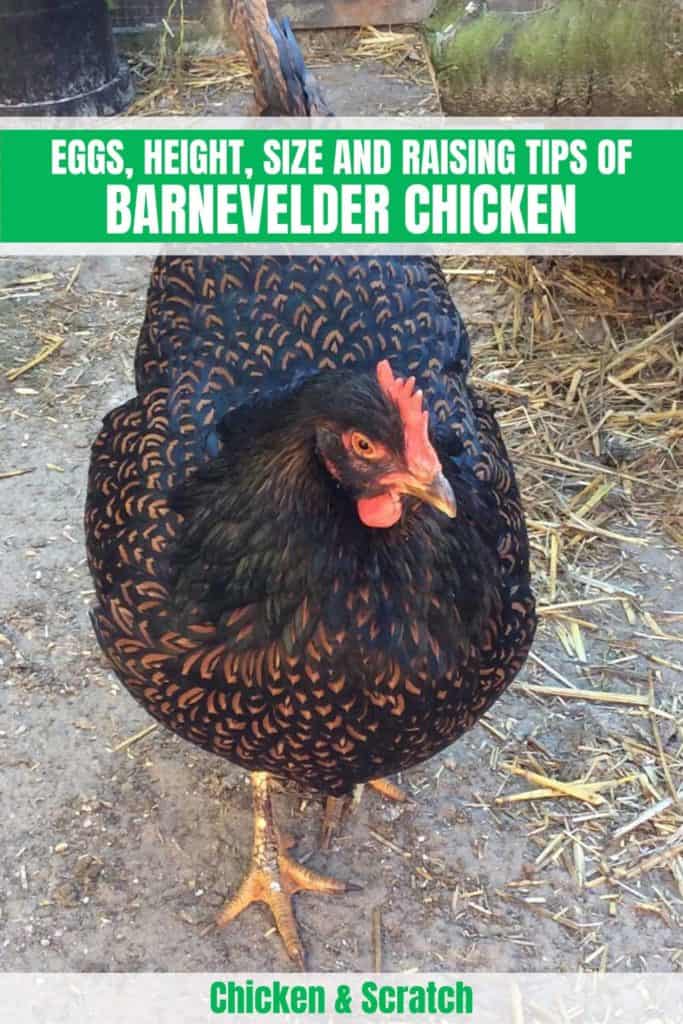

Joseph Hudson has been raising chickens for over 15 years. In 2018, he completed the Agriculture & Natural Resources program at Mt. San Antonio College. He currently raises over 1400 chickens on his 7.5-hectare farm. He keeps sharing his experience on raising healthy and happy chickens on Chicken Scratch The Foundry.
